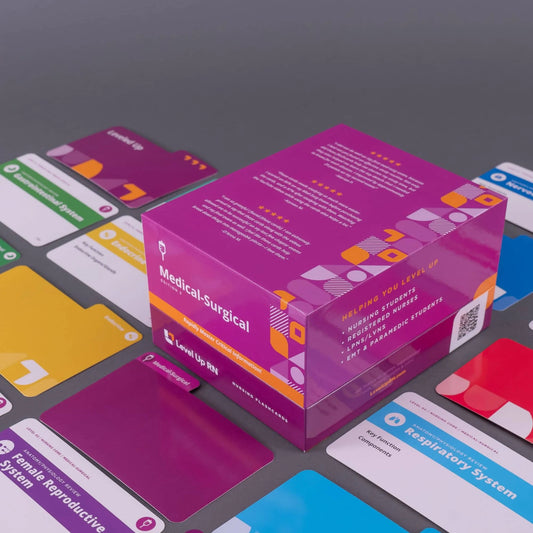Med-Surg - Cardiovascular System, part 13: Aneurysms
Updated: Cathy ParkesAneurysms, including an abdominal aortic aneurysms and a thoracic aortic aneurysm. The pathophysiology, risk factors, signs/symptoms, diagnosis, treatment, nursing care, and patient teaching associated with aneurysms.
Full Transcript: Med-Surg - Cardiovascular System, part 13: Aneurysms
Full Transcript: Med-Surg - Cardiovascular System, part 13: Aneurysms
Hi, I'm Cathy with Level Up RN. In this video, we are going to talk about aneurysms, and at the end of the video, I'm going to give you guys a little quiz to test your knowledge of some of the key concepts I'll be covering in this video. So definitely stay tuned for that. And if you have our Level Up RN medical surgical nursing flashcards, definitely pull those out so you can follow along with me.
An aneurysm is a balloon-like bulge in the arterial wall.
And the pathophysiology behind this disorder is that we have a congenital disorder, trauma, infection. or disease which damages and weakens the arterial wall.
In terms of risk factors, white males are at higher risk for aneurysms. Other risk factors include older age, atherosclerosis, hypertension, elevated cholesterol numbers, smoking, and disorders such as Marfan syndrome, which is a connective tissue disorder.
In terms of signs and symptoms, the patient may be asymptomatic, so that's very common, and they may discover that the patient has an aneurysm when they go in for a CT or ultrasound for something else.
If the patient has an abdominal aortic aneurysm, or AAA, hallmark symptoms of this disorder include flank or back pain, as well as a pulsating abdominal mass. And then you may hear a bruit over the area as well. If you suspect that the patient has an AAA, it's going to be very important that you do not palpate the area because we do not want to rupture the aneurysm.
If the patient has a thoracic aortic aneurysm, hallmark symptoms of this type of disorder include severe back or chest pain, shortness of breath, difficulty swallowing, and a cough.
Diagnosis of an aneurysm can be done with a CT or ultrasound.
Treatment is aimed at preventing rupture of the aneurysm, so antihypertensives are going to be a key treatment for this disorder. Because if you think about it, if we have high blood pressure against those weakened arterial walls, then that places the patient at high risk for a rupture of the aneurysm. So we want to control their blood pressure. In most cases, we're going to want the systolic blood pressure under 130, and the provider may want their blood pressure even lower. So definitely follow orders.
In terms of surgical interventions, those include an aneurysm resection or repair.
For nursing care, we're going to want to monitor for signs of a rupture, which can include a sudden onset of severe pain. And if we have a rupture, that patient is going to be losing blood very quickly. So they will likely be exhibiting signs and symptoms of hypovolemic shock, which can include hypotension, diaphoresis, a decrease in level of consciousness, oliguria, and decreased pulses distal to the rupture. So you're going to be closely monitoring the patient's vital signs, their cardiac rhythm, as well as their urine output. If that urine output falls below 30 milliliters an hour, then that could be indicative of a rupture. So you're definitely going to want to notify the provider.
In terms of patient teaching, we definitely want to advise your patient to stop smoking. If they smoke, they should slowly increase their physical activity, maintain a normal body weight, make sure their lipid levels are within normal range, and they need to closely monitor their blood pressure in order to keep it well controlled to prevent a rupture.
All right, it's time for a quiz. Three questions for you. First question. What type of aneurysm is characterized by a pulsating abdominal mass? The answer is an abdominal aortic aneurysm or AAA.
Question number two. What type of medication is used in the treatment of aneurysms? The answer is antihypertensives, so we want to control our patient's blood pressure. If you answered a specific type of antihypertensive agent, that's fine too.
Question number three. What type of aneurysm is characterized by severe back or chest pain, a cough and shortness of breath? The answer is a thoracic aortic aneurysm.
All right, I hope you did well with that quiz. If not, go back and review the flashcards. It often takes repetition to remember all of these different facts. Take care and good luck with studying.



1 comment
is there any lab values that we must pay attention to whilst managing a patient with an aneurysm?